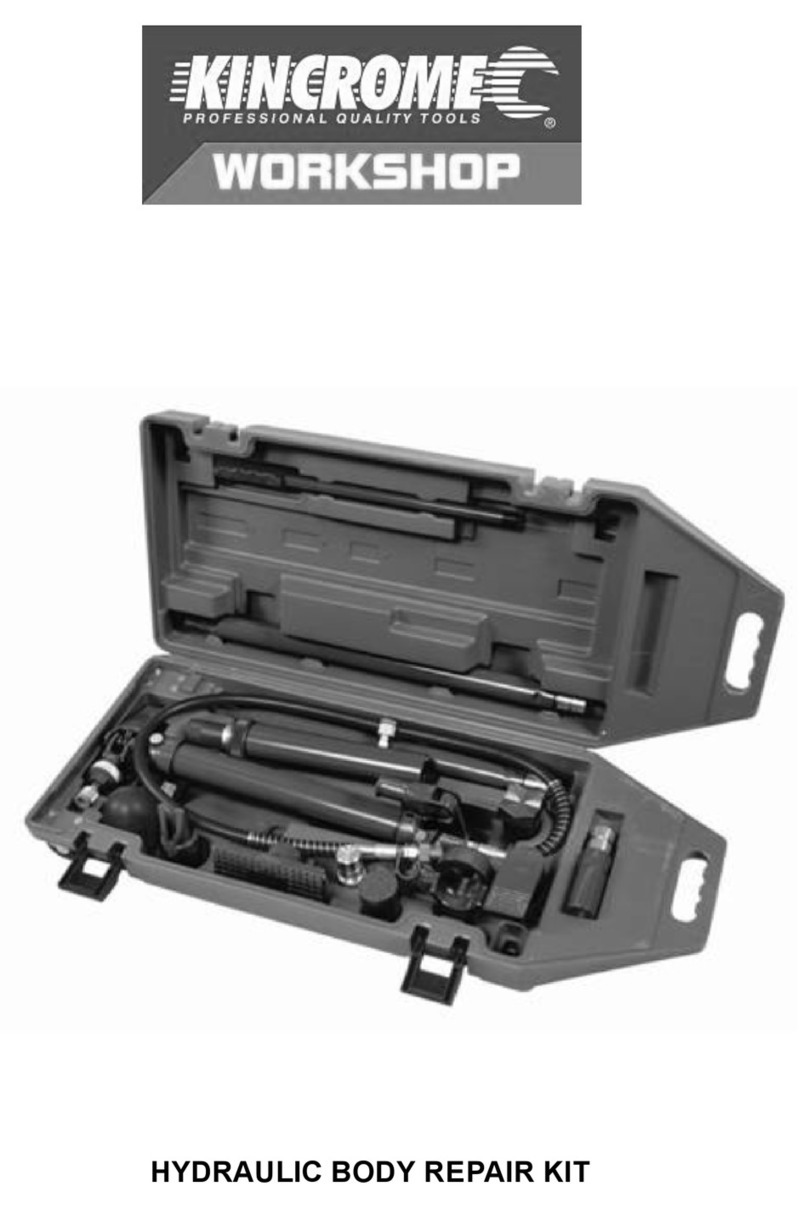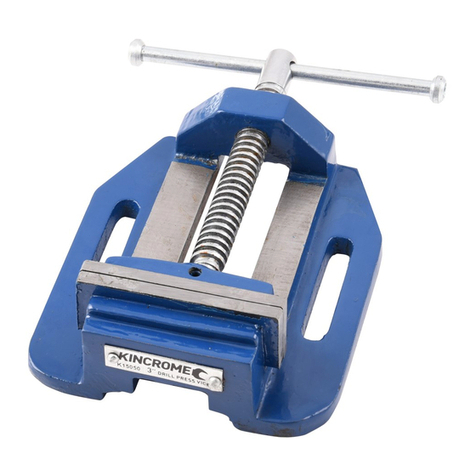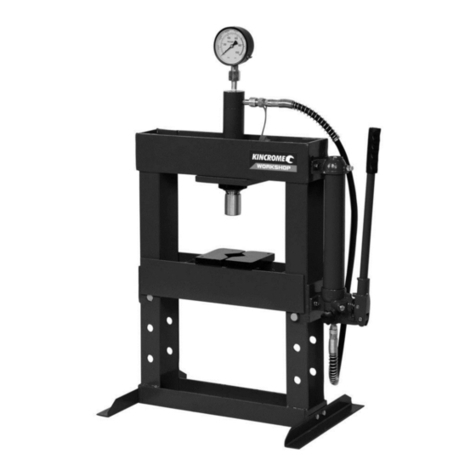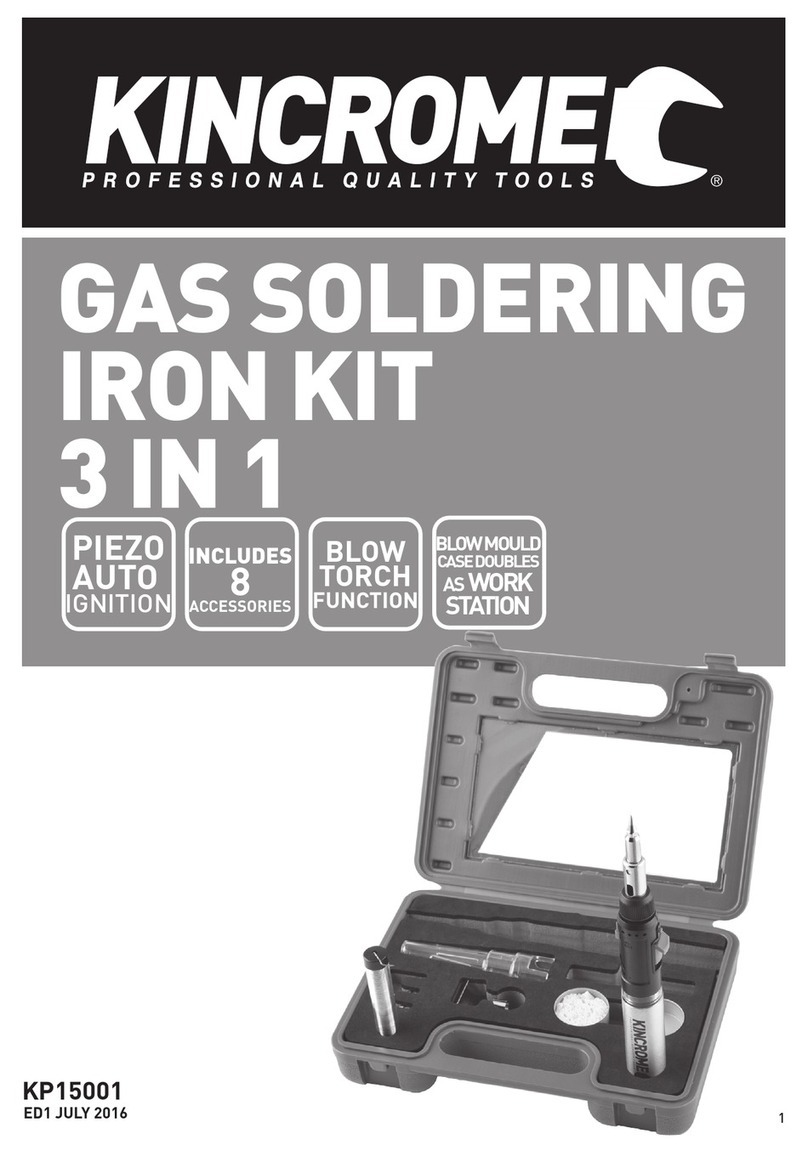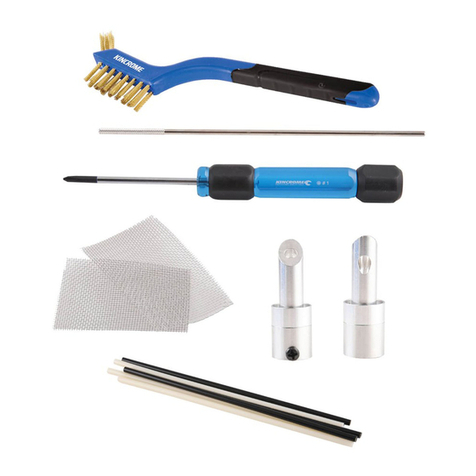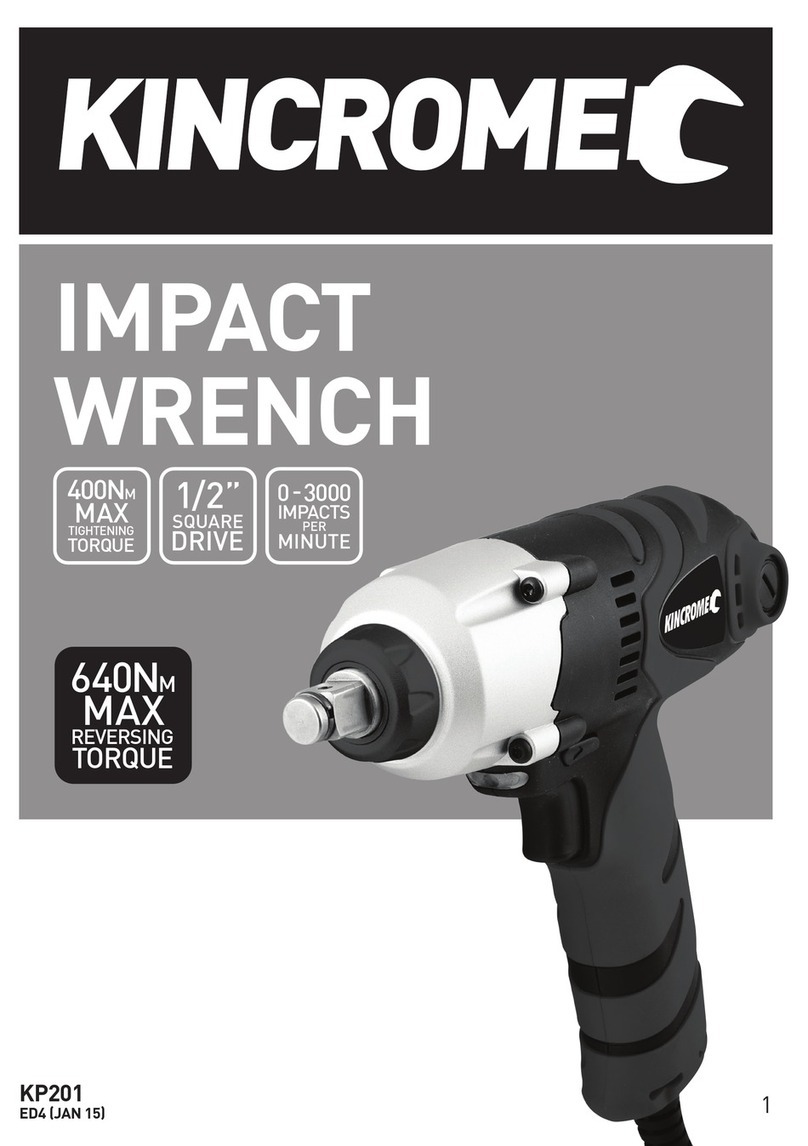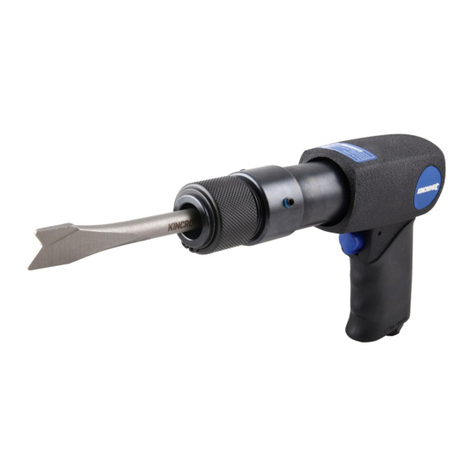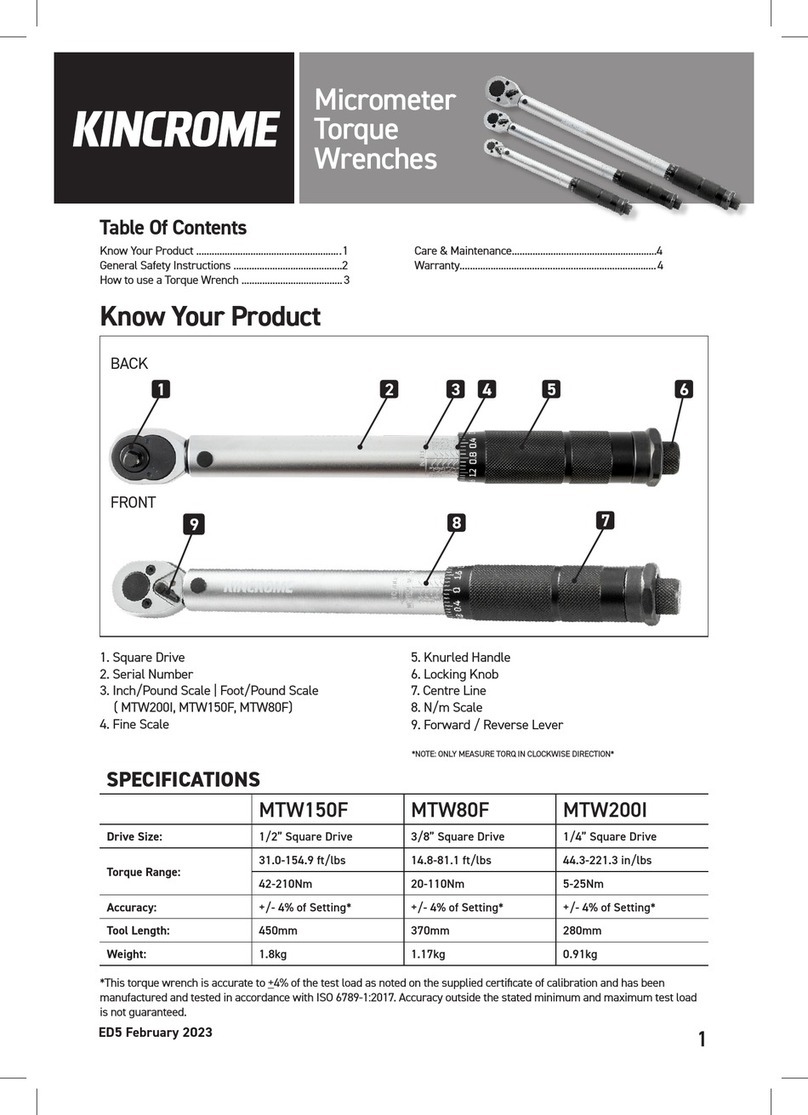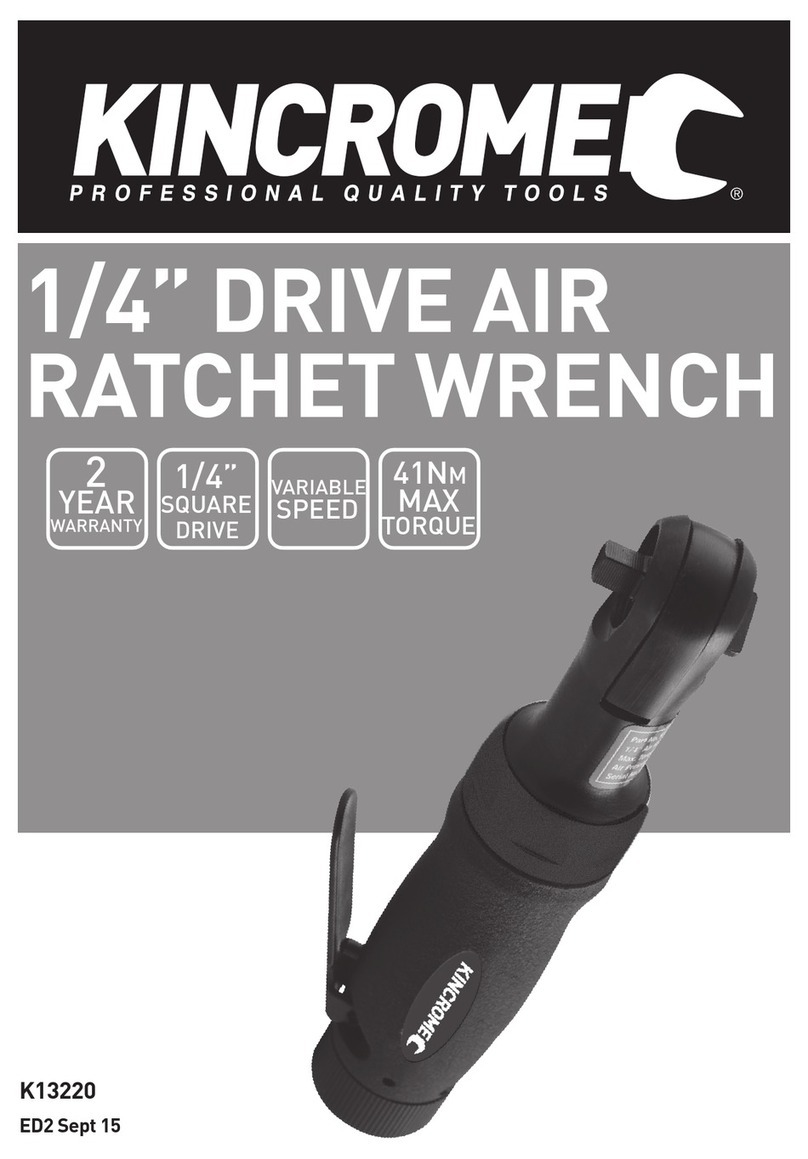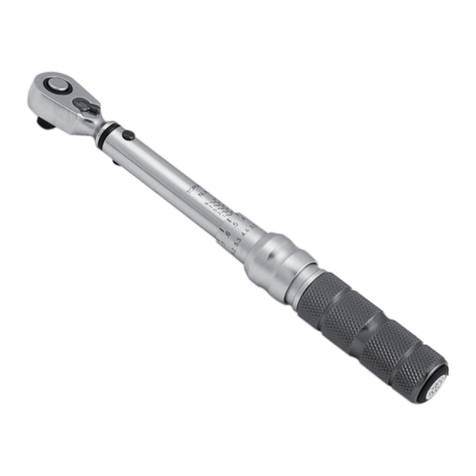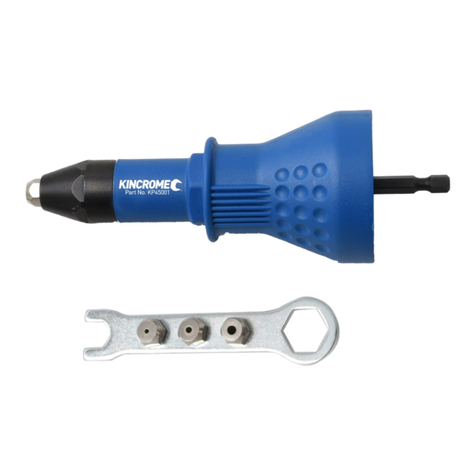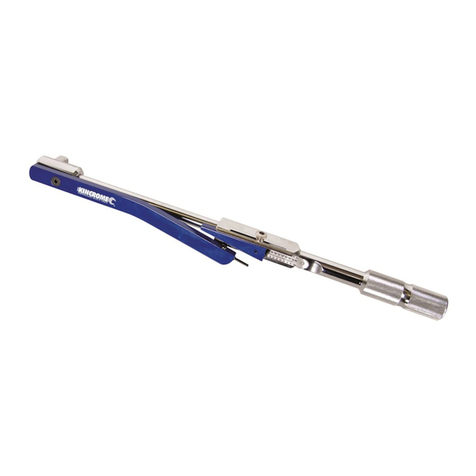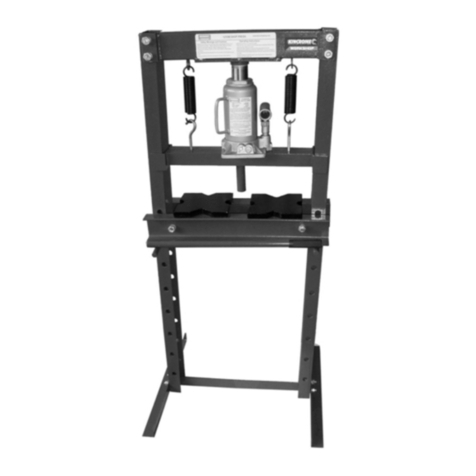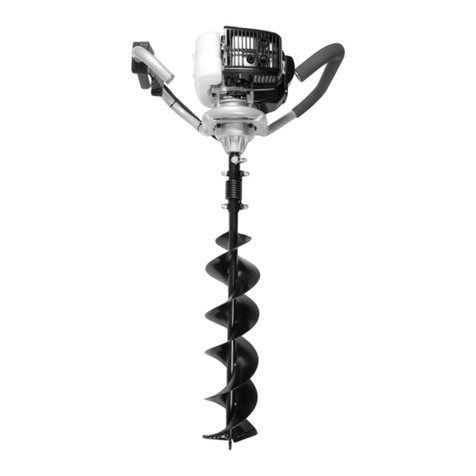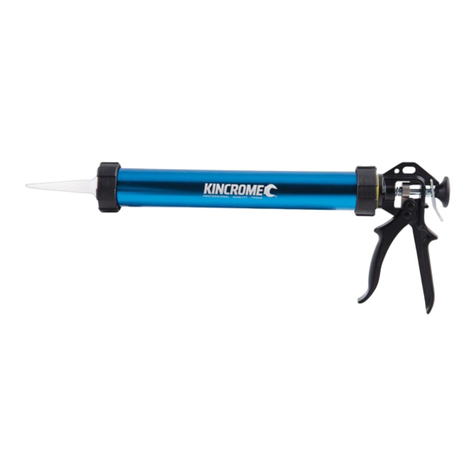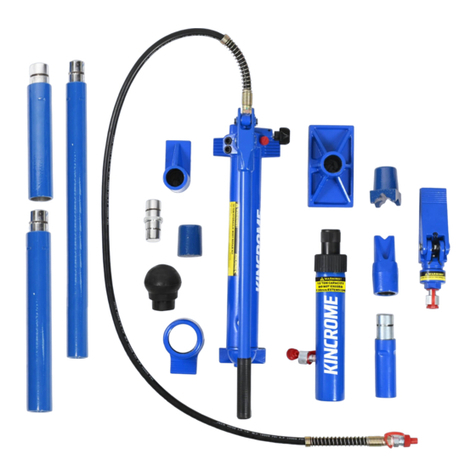4
1/2” DR IMPACT WRENCH HEAVY DUTY
ImpactWrench User Instructions
7) Before Starting
TO PREVENT SERIOUS INJURY FROM EXPLOSION:
Verify compressor is off before setup. Use only clean, dry,
regulated, compressed air to power this tool. Do not use
oxygen, carbon dioxide, combustible gases, or any other
bottled gas as a power source for this tool.
1. It is recommended afilter, regulator with pressure gauge, oiler,
in-line shut-off valve, and quick coupler be fitted for optimal
operation, as shown on Figure A.
2. An in-line shut-off ball valve is animportant safety device,
it will shut-off the air supply even if the air hoseis ruptured.
The shut-off valve should be a ball valve becauseit can be
closedquickly.
Note: If an automatic oiler system is not used, add a 4 to 5 drops of Kincrome Air Tool Oil to the air inlet before operation. Add 1-2
drops every hour for continual use.
3. Attach an air hose to the compressor’s air outlet. Connect the air hose to the air inlet (1) of the tool. Other components, such as
a quick connect fitting and quick connect coupler, will make operation more efficient, but are not required.
WARNING! Do not installa quick coupler directly on the tool. Couplers contains anair valve that will allow the air tool to
retainpressure and inadvertently operate after the air supply is disconnected.
4. The air hose must be long enough to reachthe work area and allow free movementwhile working.
5. Turn on the air compressor according to the manufacturer’s directions and allow the tank to build up pressure until it cuts-off.
6. Adjust the air compressor’s regulator so that the air output is at the tools recommended working pressure, the output must not
exceed the tool’s maximum air pressure at any time. Adjust the pressure gradually, while checking the air outputgauge to set
the optimal pressure range.
7. Inspect all air connections for leaks. Repair any leaks.
8. If the tool is not being used, turn off and detach the air supply, safely discharge any residual air pressure, and release the trigger
(2) and/or turn the tools switch to its off position to prevent inadvertent operation.
8) Operation
1. Screw in Nitto Style Fitting (6) to the air inlet (1). Thread (teflon) tape may be required to ensure a leak free seal.
2. Connect the air hose to the air inlet (1) of the tool.
3. Pushand lock a 1/2” drive socket (not included) onto the Anvil(6). (Use only Impact Rated Kincrome Sockets)
4. The Impact Wrench can be used in either Forward or Reverse direction by push the forward/reverse button (5) backwards
or forwards.
Note: There are 3 speed/torque settings for the forward and 1 speed for reverse direction.
5. For forward, from the front of the impact wrench push the forward/reverse button (5) backwards.
6. For Reverse, from the back of the impact wrench push the forward/reverse button (5) forwards.
7. To tighten a nut or bolt, place the socket (not included) over the nut or bolt head ofbolt you wish to tighten.
8. Holdthe handle firmly and place other hand on top of tool. Then gently squeeze the trigger (3). When the nut or bolt is tightened
or loosened, release the trigger (3).
9. To loosen, set the forward/reverse button (5) to the Reverse setting.
10. Place socket (not included) over desired nut or bolt head, hold the handle firmly and place other hand on top of tool and gently
squeezethe trigger (3). When the nutor boltis tightenedor loosened, releasethe trigger (3).
11. If tool requires more power to accomplish task in forward or reverse, ensure that the tool is receiving sufficient, un-obstructed
airflow (CFM), increase/decrease the pressure (PSI) output of regulator ensuring you do not exceed the rated maximum inlet air
pressure of the tool.
Caution: Do not exceed tool’s maximum inlet air pressure rating (90 PSI). If tool still does not have sufficient force at maximum
pressure andsufficient airflow, then a larger toolmay be required.
Figure A
